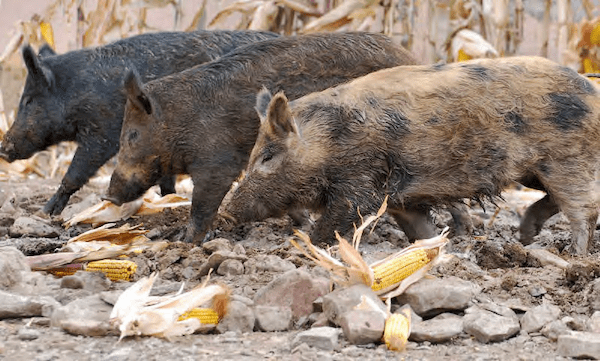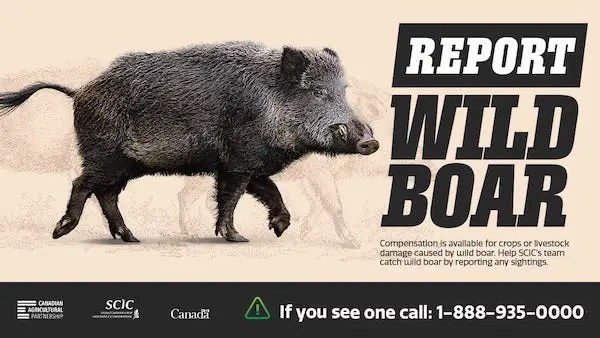A special breed of hybrid super pigs from Canada has started to travel south into the northern United States. The pigs pose a threat to native wildlife and may prove tough to eradicate. The spread of the pigs has only increased in recent years.
According to Dr. Ryan Brook, who leads the University of Saskatchewan’s Canadian Wild Pig Research Project, Canada’s wild pig problem is relatively new. “The U.S. has a 400-plus year history with invasive wild pigs, but we didn’t have any here until the early 1980s,” he says. “There was a big push to diversify agriculture with species like wild boards and ostriches. Wild boars were brought in from Europe to be raised on farms across Canada.”
Most of those pigs were kept on meat farms, but some were used on high-fence hunting preserves. Many farmers and ranchers soon crossbred the wild boars with domestic pigs. According to Brook, the hybridization resulted in bigger “super pigs” that could survive in cold climates. “For surviving in cold winters, one of the rules of ecology is: the bigger the better,” he says. “Larger body animals survive the cold better and have better reproduction in those conditions.”
Originally crossbred to help farmed pigs grow larger and tolerate the cold temperatures of Canada, a drop in the market about two decades ago led some farmers to let their hybrid pigs run free. Now they’re running very free, according to Field and Stream. The super pigs are coming south, likely heading to Montana, North Dakota, Minnesota, and Michigan.
The problem is “wild hogs” feed on anything. They gobble up tons and tons of goslings and ducklings in the spring. They can take down a whitetail deer, even an adult,” says Brook. “Originally, it was like ‘wow, this is something we can hunt.’ But it’s become clear that they’re threatening our whitetail deer, elk, and especially, waterfowl. Not to mention the crop damage. The downsides outweigh any benefit wild hogs may have as a huntable species.”
According to a USDA study, wild hogs can be blamed for +$1.5 billion in damages every year in the United States. The feeding habits of wild hogs make them particularly destructive to crops, woodland habitats, levees, moist soil units, golf courses, and right of ways. Feral swine also cause great risks to human health and safety, by harboring and transmitting diseases to people and pets, causing collisions with vehicles, and massively disrupting livestock.
Keep in mind, pigs are not native to North America, but they’ve been here for quite a while: The first documented pigs arrived in the States in 1539 on a boat that landed in Florida. The population of wild pigs has exploded over the past two decades, thanks in part to people releasing pigs into new areas to hunt them, and there’s now an estimated 6 million to 7 million in the continental U.S., ranging over 48 states; in 2000, they were present in just 27.
You can read more details at the Field & Stream article titled, “Population Explosion of Canadian “Super Pigs” Could Spread Into the Northern U.S.“










